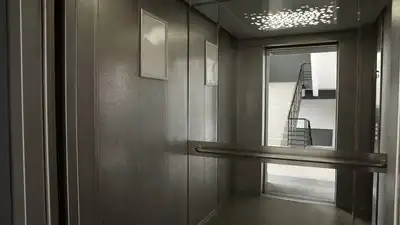ARTICLE AD BOX

Mirrors in elevators serve multiple purposes beyond mere decoration. They alleviate claustrophobia by creating an illusion of spaciousness and enhance safety by providing a view of the surroundings. Additionally, mirrors assist individuals with disabilities, offer a distraction to pass the time, and improve the overall design and lighting of the elevator interior.
Stepping into an elevator, one notices the mirror staring back at them. At first glance, it might just seem like a simple design choice, maybe to make the space feel less claustrophobic or to give people a quick chance to fix their hair.
But the presence of mirrors in elevators serves several purposes, many of which go beyond just decoration.

While elevators are often seen as just a means to get from one floor to another, the experience inside them can actually matter a lot, especially in busy buildings or tall skyscrapers. Mirrors help in small yet important ways, changing how we feel and behave during those few seconds or minutes while moving from one floor to another.
Here are some reasons why mirrors are a common and useful feature in elevators.
They reduce feelings of claustrophobia
Elevators are small, enclosed spaces, and for some, that can trigger a sense of unease or panic. Mirrors help ease this discomfort by creating the illusion of more space. When one steps into an elevator and sees a reflection, the area instantly feels larger and less confining. This simple visual trick helps calm nerves and makes the ride more tolerable for those with claustrophobia or anxiety in tight spaces.

They provide a sense of safety
Mirrors can also enhance a feeling of personal safety, especially in public or less-monitored buildings. By being able to see behind you or observe others in the elevator without turning around, one can feel that they have control over the surroundings one is in. This can be comforting, especially when sharing the space with strangers. In some places, mirrors are even used in place of security cameras to offer a level of passive surveillance.
They assist people with disabilities
For people using wheelchairs or mobility aids, mirrors in elevators are quite helpful. They help individuals to move and place themselves properly, especially when backing in or out of the lift. This makes the space more accessible and user-friendly. Mirrors also help users spot elevator buttons and ensure they are aligned correctly.
They help pass the time
Waiting even a few seconds in an elevator can feel longer when there’s nothing to do.
Mirrors give people something to look at, often at themselves. That quick glance to adjust your hair, fix your clothes, or just check your reflection can make the ride feel quicker. It’s a subtle distraction that keeps people mentally occupied, making short trips feel more pleasant and less awkward.

They improve design and lighting
From a design perspective, mirrors help brighten up small elevator interiors by reflecting light. This creates a cleaner, more open look and improves visibility inside the space. For designers, mirrors are an easy way to make elevators appear more modern, elegant, and well-lit, without needing major changes. This also makes the space feel more welcoming and less dull, especially in older buildings or underground areas.



.png)
.png)
.png)
















 14 hours ago
3
14 hours ago
3









 English (US) ·
English (US) ·